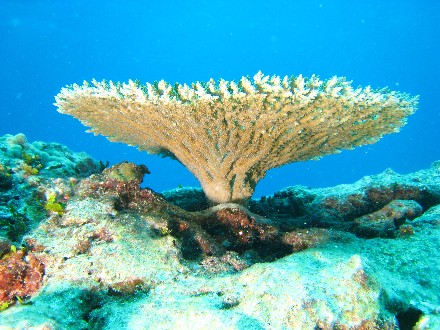Transplanting coral fragments broken off by storms could be a simple, cheap, and effective way of restoring small areas of damaged reef.
The equivalent on land would be if twigs broken off trees during a storm could be stuck in the ground and left to sprout into new trees.
 A team of researchers led by Graham Forrester from the University of Rhode Island in the US have published a study in the journal Restoration Ecology that assesses how well coral transplantation works to help healthy reefs grow back.
A team of researchers led by Graham Forrester from the University of Rhode Island in the US have published a study in the journal Restoration Ecology that assesses how well coral transplantation works to help healthy reefs grow back.
White Bay in the British Virgin Islands in the Caribbean was the study site and threatened elkhorn coral - Acropora palmata - was the focus species, which as its name suggests, grows in a branching form like deer antlers and get easily damaged by storms.
The research team, with the help of students and local residents, dived down and picked up living coral fragments after a storm, then took them to another site where elkhorn corals had been wiped out by a deadly disease in the 80s and 90s - as they have across much of the Caribbean region.
Fragments were fixed in place using underwater cement, epoxy resin, and plastic cable ties.
Four years later, 40% of the transplanted coral was still alive, despite them being hit by a storm and two coral bleaching events - when increased sea temperatures cause corals to loose the vital, symbiotic algae that live in their tissues. The broken coral fragments had much better survival chances when they were transplanted and fixed in place, compared to fragments left lying on the seabed.
Crucially, the transplanted corals had grown large enough to become sexually mature, so these new reefs should be able to start seeding other nearby reefs with larvae.
This method is straightforward and cheap, but it is nevertheless labour intensive and not a viable option for large areas of reef - imagine trying to replant the Great Barrier Reef. But it certainly offers an option for boosting reef health on a local scale making them more resilient to the bigger, global problems reefs face including climate change, pollution, and overfishing.
- Previous Caries and cardiac trouble
- Next Animal instinct, or tradition?










Comments
Add a comment